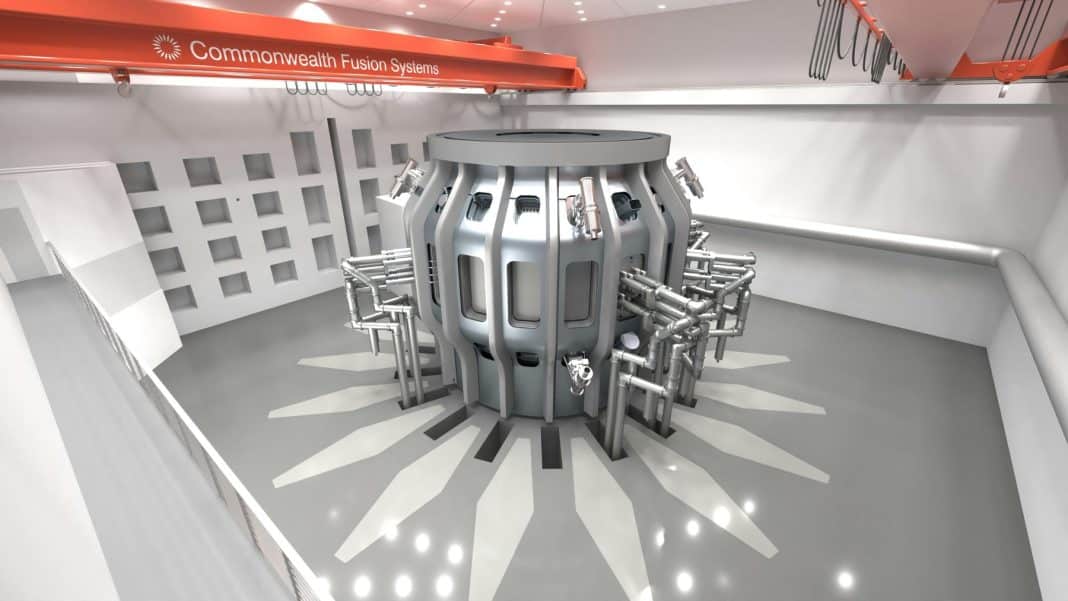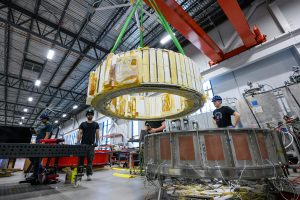Nuclear fusion energy is clean, safe, and sustainable. It combines lighter atoms to release vast energy without high-level radioactive waste. Commonwealth Fusion Systems (CFS), the Massachusetts-based fusion giant aims to revolutionize the clean-energy space by generating infinite carbon-free power with its flagship fusion project SPARC. Since its inception in 2018, the company has secured over $2 billion in funding, which makes it the world’s largest private fusion company.
Recently CFS announced that it has built and tested a groundbreaking electromagnet, the Central Solenoid Model Coil (CSMC). This scientific innovation brings the company closer to using clean fusion energy for the grid.
Commonwealth Fusion Systems’ Mighty Magnet Makes Fusion Feasible
The CSMC test, combined with the already tested (in 2021) and successfully existing Toroidal Field Model Coil (TFMC), proves the functionality of two essential high-temperature superconducting (HTS) magnets. These magnets are crucial for SPARC, the tokamak machine which is designed to demonstrate net fusion energy.
Additionally, the TFMC validated magnets for steady electrical currents, while the CSMC confirmed the capability for pulsed electrical currents.
Brandon Sorbom, Co-Founder and Chief Science Officer noted,
“This is an important milestone on the road to commercialization. When we hit the button and put current through the magnet, it performed like a champ and hit all its major test objectives. The fact that our team was able to develop this technology from benchtop to a fully integrated, at-scale superconducting magnet in just a couple of years is huge.”
The press release also mentioned that CFS developed PIT VIPER which is an advanced HTS cable technology. It aids in powering SPARC’s central solenoid (CS) and poloidal field (PF) magnets. PIT VIPER’s innovative design minimizes heating during rapid current changes, enabling high-performance magnets.
The CSMC Model
source: CFS
Key test results from the Central Solenoid Model Coil include:
- Handling electrical currents up to 50,000 amps, enough to power 250 modern homes.
- Generating a magnetic field of 5.7 teslas—100,000 times Earth’s magnetic strength.
- Releasing energy rapidly at 4 teslas per second, validating SPARC magnet behavior.
- Storing a record 3.7 megajoules of energy, equivalent to five pickup trucks traveling at 60 mph.
- Using fiber optics to detect overheating events, ensuring magnet safety.
CFS and MIT: Partners in Fusion Progress
The successful CSMC test showcases CFS’ leadership in magnet technology. The company scaled up PIT VIPER cable production and demonstrated its ability to design and operate magnets under SPARC-like conditions.
Experts from CFS and the Massachusetts Institute of Technology (MIT) collaborated on this project and conducted the tests at MIT’s Plasma Science & Fusion Center (PSFC). Moving on, CFS plans to produce the first plasma with SPARC in 2026 and achieve net energy soon after. The company’s first power plant, ARC, is expected to deliver electricity to the grid in the early 2030s.
Ted Golfinopoulos, one of the principal investigators at MIT for the CSMC project said,
“Where the mission of the TFMC was to demonstrate a steady strength, the CSMC needed to demonstrate speed.”
He also hailed the collective effort of the amazing team by remarking,
“Hundreds of hands have touched this coil, from its inception on the drafting board to its long and complicated test program. The ingenuity, perseverance, and heart shown by this close-knit team was as impressive as the coil that sprang from their labors.”
Notably, the U.S. Department of Energy’s Advanced Research Projects Agency–Energy (ARPA–E) and Fusion Energy Sciences (FES) programs supported the innovation.
Commonwealth Fusion Systems Aims to Transform Coal Plants with Nuclear Fusion
From a recent Bloomberg report, we discovered that Tokamak designs were first developed in the 1950s and they already demonstrated the ability to trigger fusion reactions. However, their practical and commercial viability is still questionable. This is because these traditional electromagnets require a humongous amount of power to shift them from scientific experiments to practical energy solutions.
CFS’s blueprint electromagnets that we described earlier can keep the plasma under control and maintain the continuity of the fusion reaction. This is why Bob Mumgaard, CEO of Commonwealth Fusion Systems expressed his satisfaction, saying that this was the last major technology hurdle they needed to clear.
The report further highlighted CFS’s plans to replace fossil fuel boilers with fusion power by harnessing the same energy source as the sun. The company is already assessing old coal and natural gas plant sites as potential locations for building its first commercial fusion systems. However, their demonstration device is still in the developmental phase.
Nonetheless, CFS is confident of its success and the shift from fossil fuels to clean, carbon-free energy using fusion.
The recently published Global Fusion Industry Report reveals a rapidly intensifying race to commercialize fusion energy. Currently, 45 companies are advancing diverse technologies and have collectively raised over $7 billion. Public-private partnerships are playing a pivotal role in the fusion development process and have brought a remarkable 50% increase in funding.
The investment figures are shown below:
Source: 2024 Global Fusion Industry Report
Industry reports and expert opinions confirm that the fusion industry is still in its development phase. Building commercial nuclear fusion systems will take time, but progress is accelerating with increased investments and scientific breakthroughs. In this space, Commonwealth Fusion Systems is driving the transition toward a global clean energy future with its groundbreaking innovations.
Sources:




